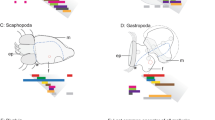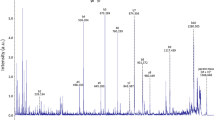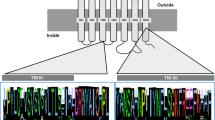Abstract
VERTEBRATE neurohypophysial hormones have a common structural pattern characterized by a chain of nine amino-acid residues with a disulphide bridge connecting the amino-acids in positions 1 and 6. There are usually two hormones in each species, the active principles rarely varying from one species to another within a given class. Thus oxytocin and arginine vasopressin have been chemically identified in five species of mammals belonging to the orders Primates, Artiodactyla, Perissodactyla and Cetacea. Isotocin (Ser4-Ile8-oxytocin) and vasotocin (Arg8-oxytocin) have up to now been isolated from six species of bony fish belonging to the families Gadidae, Scombridae and Cyprinidae. The structural variations which occur between one vertebrate class and another are confined to one or two amino-acid substitutions in positions 3, 4 or 8 (for a review of this subject see ref. 1).
This is a preview of subscription content, access via your institution
Access options
Subscribe to this journal
Receive 51 print issues and online access
$199.00 per year
only $3.90 per issue
Buy this article
- Purchase on Springer Link
- Instant access to full article PDF
Prices may be subject to local taxes which are calculated during checkout
Similar content being viewed by others
References
Acher, R., Angew. Chemie (intern. ed.) 5, 798 (1966).
Perks, A. M., and Dodd, M. H. I., Gen. Comp. Endocrinol., 3, 184 (1963).
Acher, R., Chauvet, J., Chauvet, M. T., and Crepy, D., Biochim. Biophys. Acta, 107, 393 (1965).
Chauvet, J., Chauvet, M. T., Beaupain, D., and Acher, R., CR Acad. Sci., 261, 4234 (1965).
Sawyer, W. H., Endocrinology, 75, 981 (1964).
Holton, P., Brit. J. Pharmacol., 3, 328 (1948).
Munsick, R. A., Endocrinology, 66, 451 (1960).
Acher, R., Light, A., and Du Vigneaud, V., J. Biol. Chem., 233, 116 (1958).
Chauvet, J., Lenci, M. T., and Acher, R., Biochim. Biophys. Acta, 38, 266 (1960).
Landgrebe, F. N., Macaulay, M. H. F., and Waring, H., Proc. Roy. Soc. Edinburgh, B, 62, 202 (1946).
Sawyer, W. H., Endocrinology, 66, 112 (1960).
Spackman, D. H., Stein, W. H., and Moore, S., Anal. Chem., 30, 1190 (1958).
Perks, A. M., and Sawyer, W. H., Nature, 205, 154 (1965).
Author information
Authors and Affiliations
Rights and permissions
About this article
Cite this article
ACHER, R., CHAUVET, J. & CHAUVET, M. Phylogeny of the Neurohypophysial Hormones. Nature 216, 1037–1038 (1967). https://doi.org/10.1038/2161037a0
Received:
Published:
Issue Date:
DOI: https://doi.org/10.1038/2161037a0
Comments
By submitting a comment you agree to abide by our Terms and Community Guidelines. If you find something abusive or that does not comply with our terms or guidelines please flag it as inappropriate.



